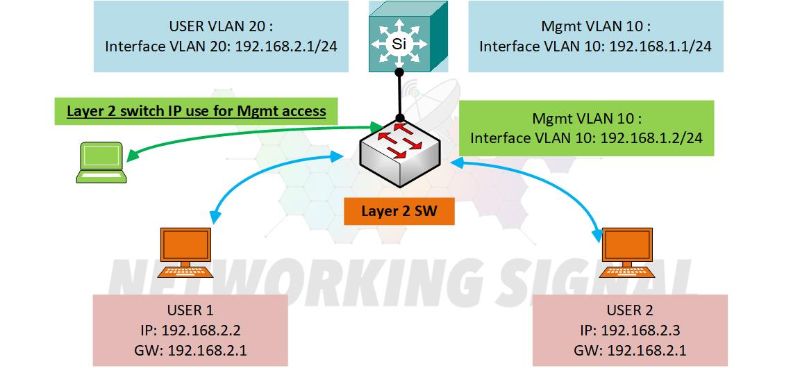Why would a layer 2 switch need an IP Address?
A Layer 2 switch operates at the data link layer (Layer 2) of the OSI model, which primarily deals with MAC (Media Access Control) addresses.
Unlike a Layer 3 device such as a router, a Layer 2 switch does not require an IP address to perform its primary function, which is forwarding frames based on MAC addresses.

However, there are some scenarios where a Layer 2 switch might need an IP address:
Management purposes
Switches often have management interfaces that allow administrators to configure and monitor them remotely.
These interfaces are typically accessed via protocols such as Telnet, SSH (Secure Shell), or a web-based interface. To facilitate remote management, the switch needs an IP address assigned to its management interface.
VLAN management (Inter Vlan Routing)
Some Layer 2 switches support Virtual LANs (VLANs), which enable logical segmentation of the network.
VLANs can be configured and managed using protocols such as VLAN Trunking Protocol (VTP) or Cisco Discovery Protocol (CDP). An IP address can be assigned to the switch to support these management protocols.
Switch Stacking
In a stacked switch configuration, where multiple switches are interconnected to operate as a single logical unit, an IP address might be assigned to the master switch to manage the stack as a whole.
The IP address allows administrators to configure and monitor the stack using a single management interface.
In what situation would the layer 2 switches have an IP address configured?
There are several reasons why a layer 2 switch might have an IP address configured.
As mentioned above, one reason is for management purposes. If the switch is responsible for forwarding traffic between different subnets, it will need to have an IP address so that it can be identified on the network.
Do switches care about IP addresses?
Layer 2 Switches do not directly care about IP addresses because they are responsible for forwarding traffic between two different switches on a network basis on MAC addresses.
Do Layer 2 switches have MAC addresses?
Yes, layer 2 switches have MAC addresses. MAC addresses are used to uniquely identify devices on a network. Every device has a unique MAC address, which is used to identify it when sending or receiving data.
Can Layer 2 switches do VLANs?
Yes, layer 2 switches can do VLANs. VLANs are used to segment a network into different logical parts. This can be useful if you want to isolate certain devices or traffic on the network.
- For Example, You could create a separate VLAN for guest devices so that they cannot access the rest of the network.
